Tagliatelle is a beloved pasta from Northern Italy, famous for its traditional pairing with bolognese. It's an egg-based pasta ribbon that is surprisingly easy to make at home and has a rich history dating back to the 15th century.
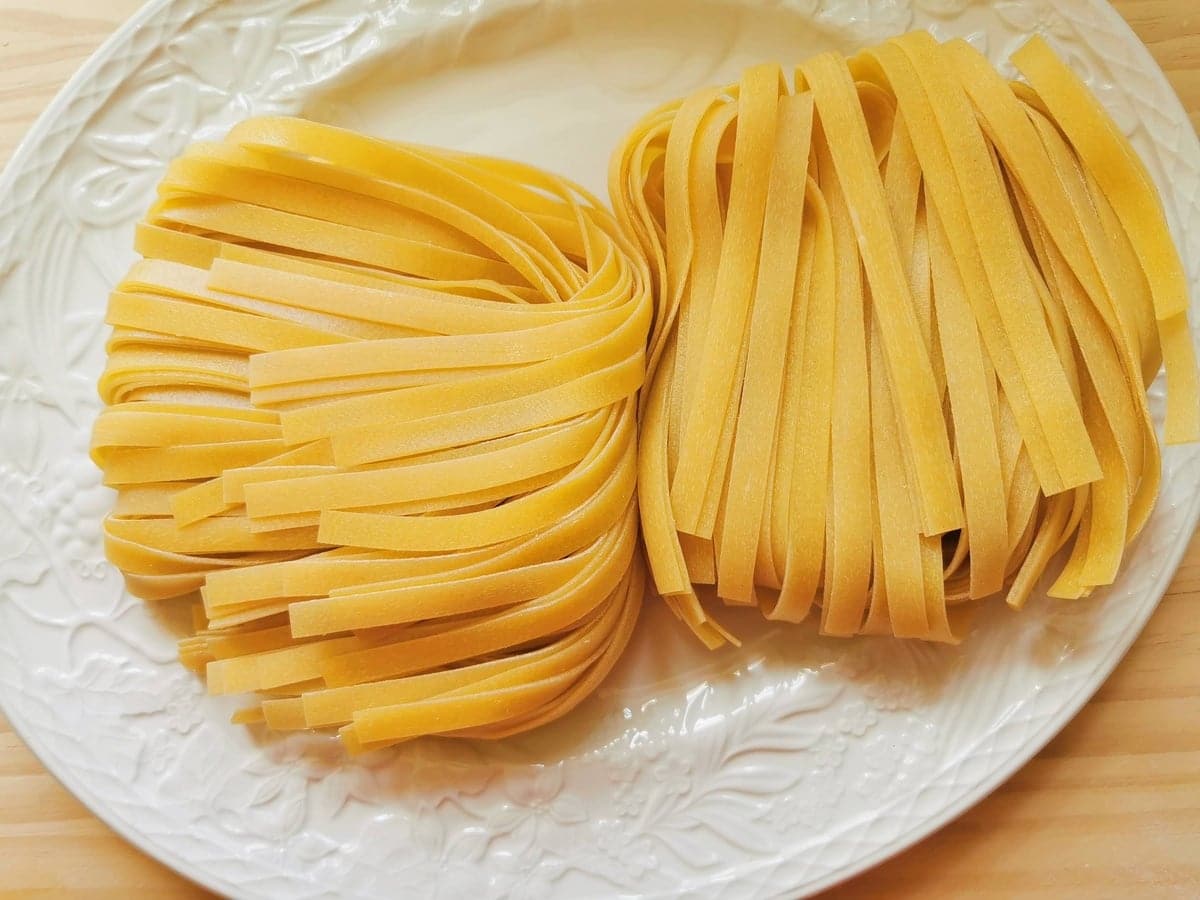
What is Tagliatelle?
Tagliatelle is a traditional egg pasta from Emilia-Romagna. Its name derives from the Italian verb 'tagliare', meaning 'to cut', which reflects its method of preparation—rolling out sheets of pasta dough and cutting them into thin ribbons.
In order to be called tagliatelle, these pasta ribbons have to have a particular width (normally 6-8mm wide). Make them too narrow or thicker and they could become fettuccine! Thinner still, and you may end up with bavette or tagliolini! Make them too wide and they will turn into pappardelle!
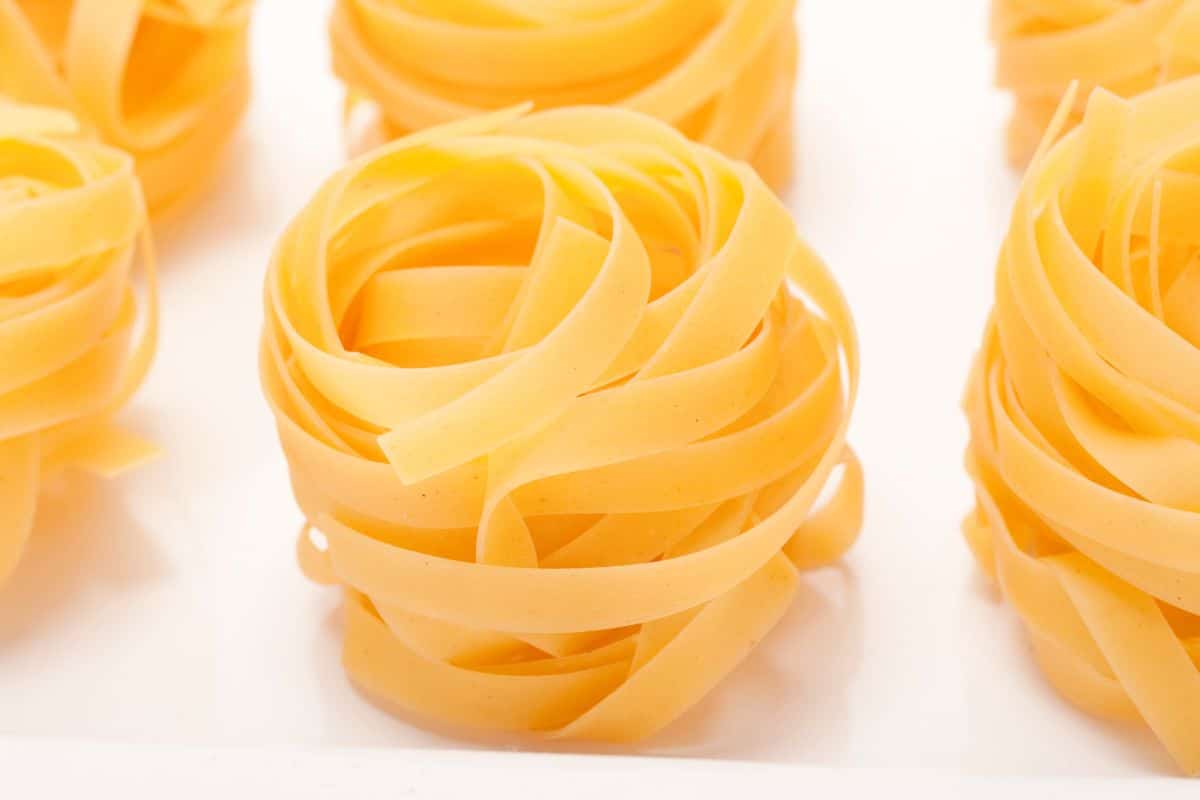
Tagliatelle Pasta History
While tagliatelle’s exact historical origins are challenging to pinpoint, it is deeply rooted in the culinary traditions of many Northern Italian regions.
According to one legend, this pasta has a rather romantic origin. There is a story that tagliatelle was invented in 1487, when Giovanni II of Bentivoglio, at the time Lord of Bologna, asked his chef to prepare a banquet in honor of Lucrezia Borgia.
Lucrezia was due to visit the city on her way to Ferrara to marry Duke Alfonso D’Este. Bentivoglio wanted to honor the bride-to-be.
The chef, Mastro Zefirano, apparently cooked an unforgettable banquet, which included a new type of pasta made by cutting classic lasagne into long golden strips of pasta in honor of the bride’s legendary blonde hair. This pasta became known as tagliatelle!
Ingredients to make tagliatelle
Tagliatelle is made from simple ingredients: soft wheat flour, fresh eggs and salt. Some recipes will add egg yolks to make the pasta richer, which also makes it more orange in color.
An easy-to-remember recipe includes using 1 large egg for every 100 grams (3.5 oz) of flour. Italians usually use soft wheat '00' flour to make egg pasta ribbons. You can also use all-purpose flour.
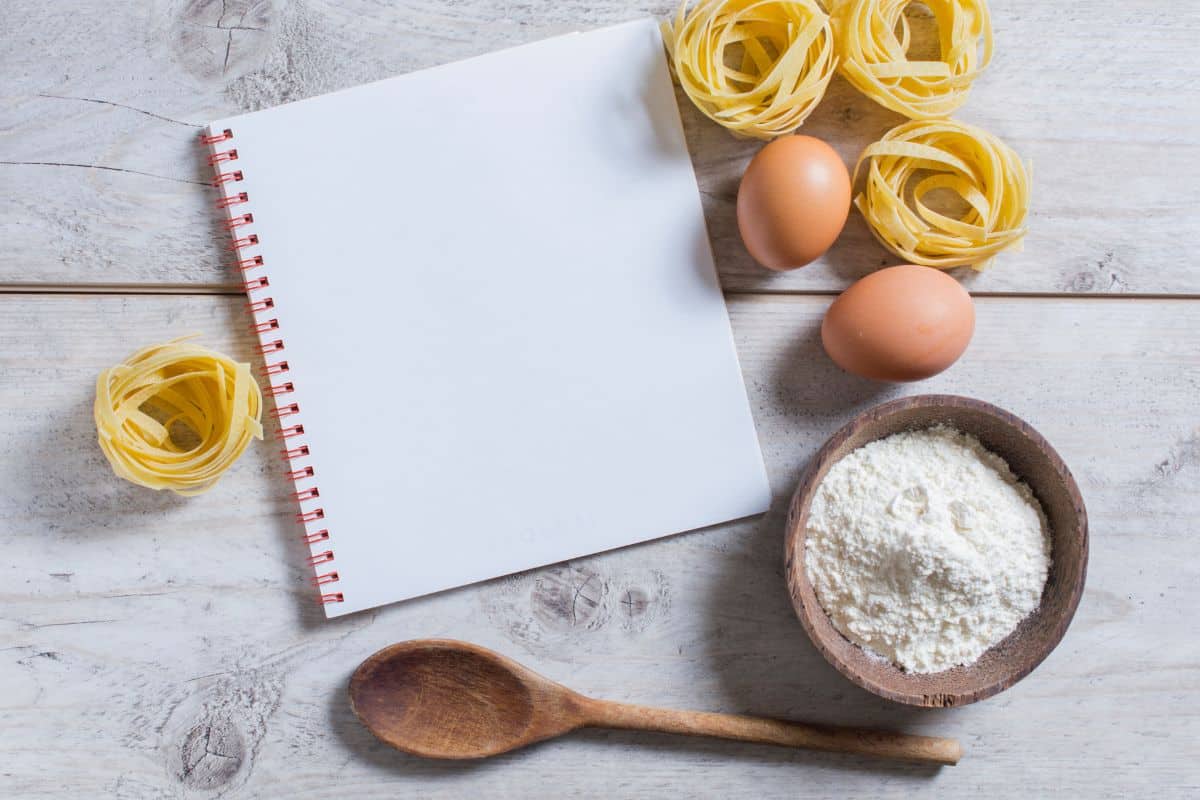
Preparation
To prepare tagliatelle, you need to knead the dough until smooth and then leave it to rest. Then roll the dough out into thin sheets, either by hand or using a pasta machine, to the desired thickness. You then cut the sheets into ribbons, either manually with a sharp knife or through a pasta cutter.
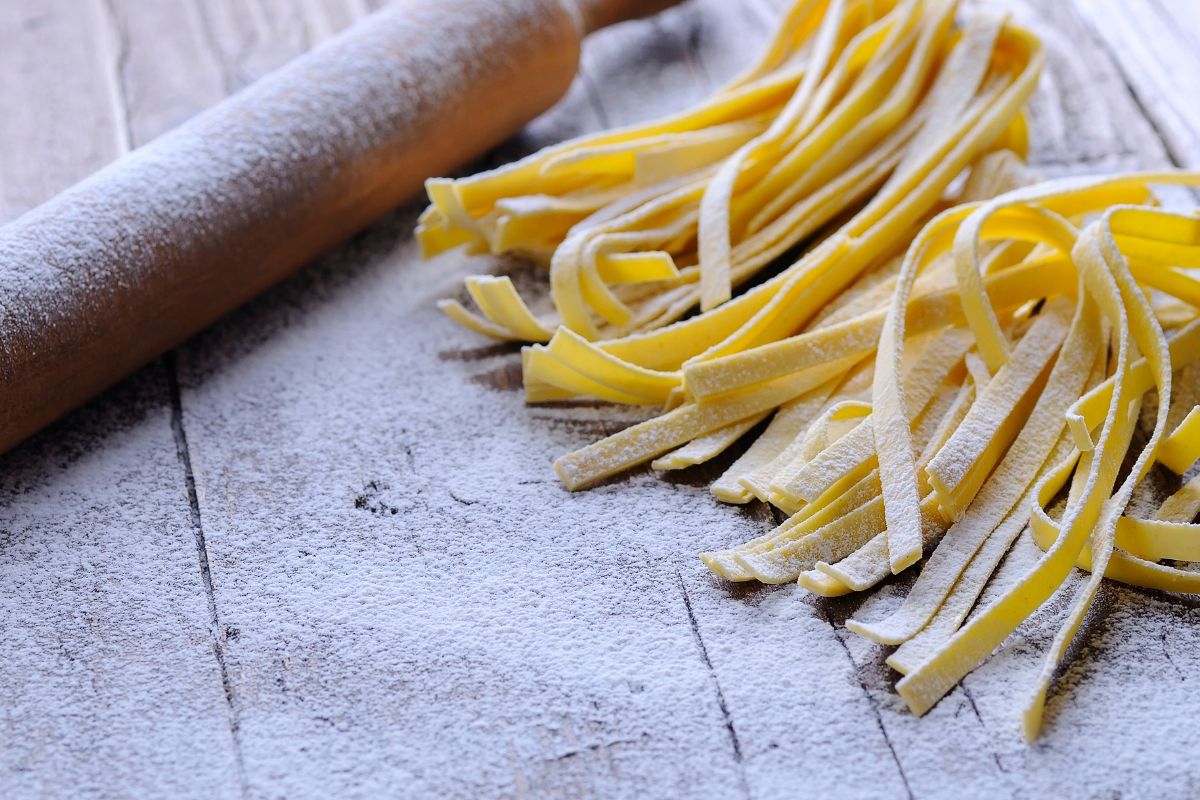
Cooking Tips
When cooking homemade tagliatelle, begin by bringing a large pot of salted water to a rolling boil. Gently place the pasta in the water and stir to separate the strands. Fresh tagliatelle typically cooks much faster than dried, usually within 3-5 minutes.
To achieve the perfect ‘al dente’ texture, start checking the pasta after 3 minutes and every 30 seconds until it is firm to the bite yet cooked through.
The process for dried tagliatelle is similar but requires more time, usually about 7-10 minutes to achieve 'al dente'. After adding the tagliatelle to boiling water, wait a minute before using tongs to gently break apart the nests. This will help the pasta cook more evenly.
While cooking times are roughly 7-10 minutes, it's good practice to start checking the pasta a minute before the package's suggested time. Then to continue tasting at regular intervals to ensure it reaches the ideal texture.
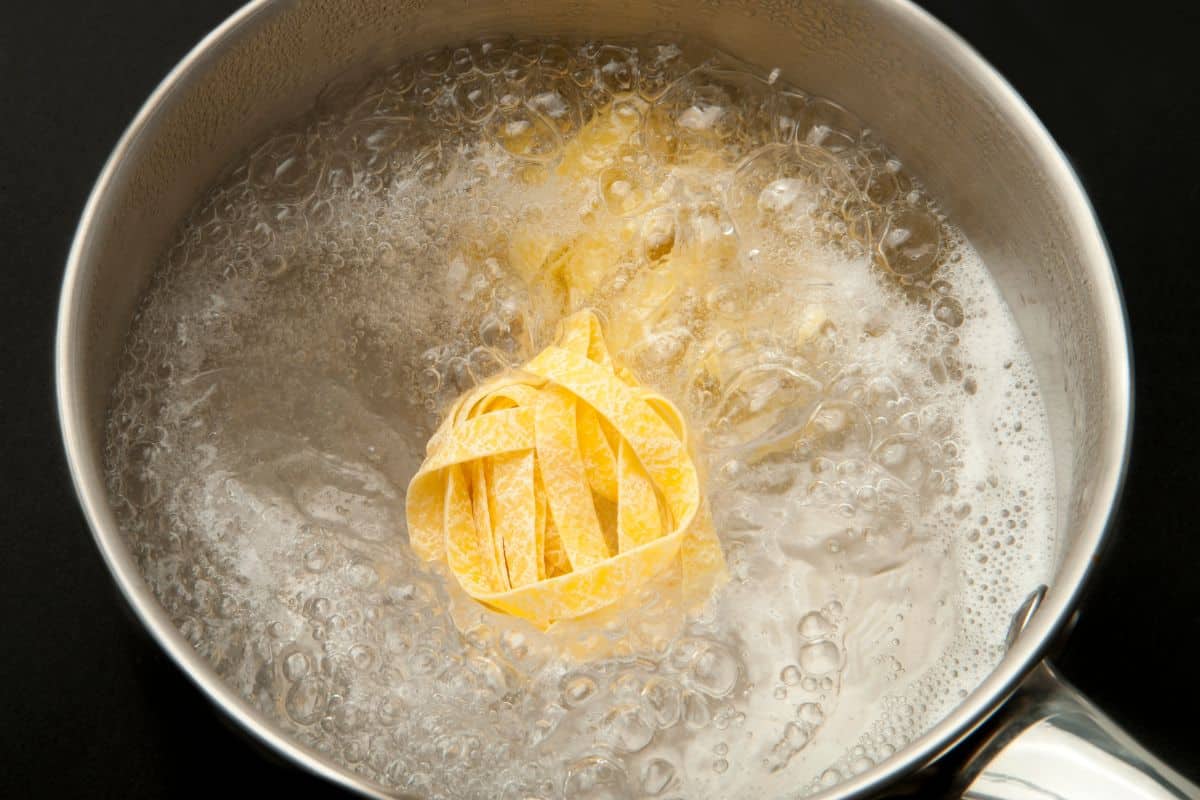
Serving Suggestions
Tagliatelle is traditionally served with hearty meat sauces, with the classic Bolognese, or 'ragù', being the most famous worldwide.
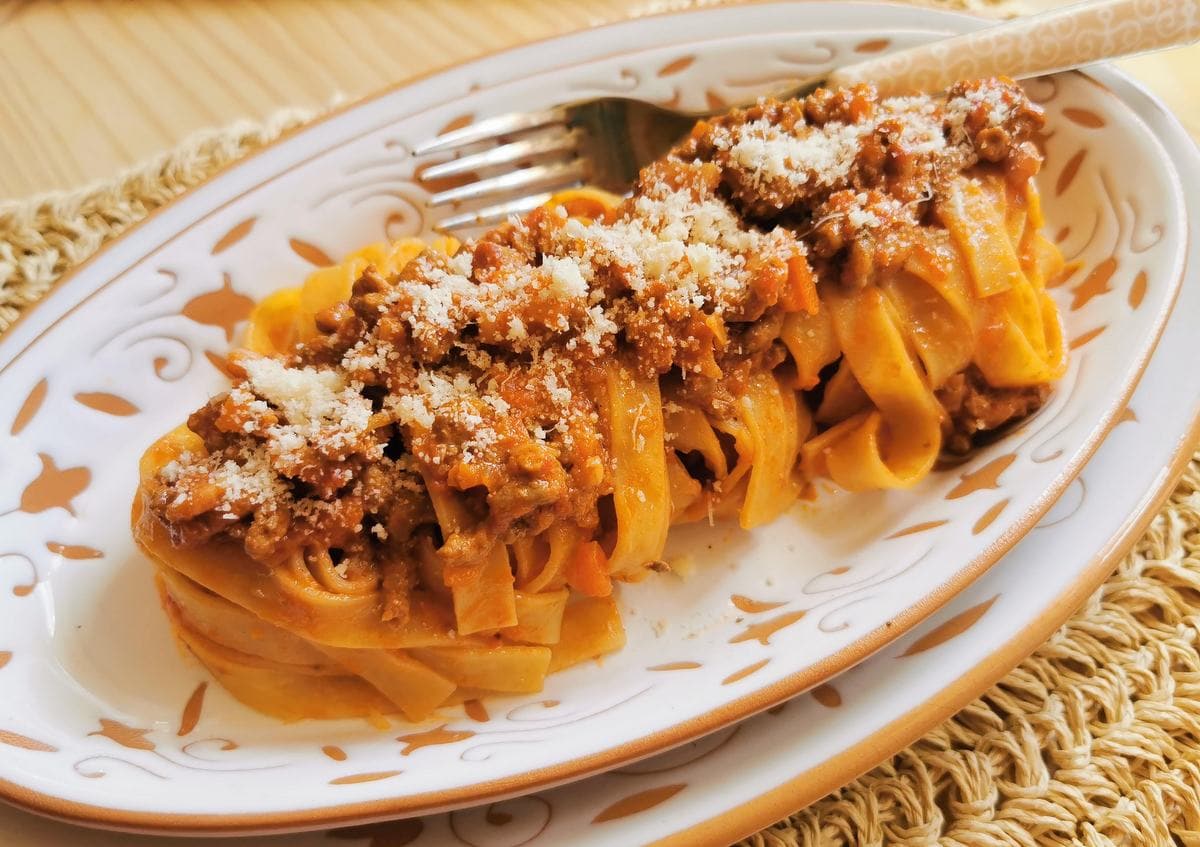
The wide, flat and slightly rough surface of tagliatelle makes it ideal for thick, rich sauces that cling to the pasta. Some other delicious tagliatelle pairings include:
- Creamy Pork Fillet Tagliatelle
- Italian Salt Cod (baccalà) and Porcini Tagliatelle
- Tagliatelle with Chicken Liver
- Tagliatelle with Porcini Mushrooms
- Tagliatelle with Rabbit Ragu
Storage
Fresh tagliatelle should be cooked soon after it is made. If you need to store it, lightly flour the pasta and lay it flat on a baking sheet, then cover and refrigerate for up to a couple of days.
For longer storage, freezing the pasta is an option; place the tagliatelle in single layers separated by parchment paper in an airtight container and use within 3 months.
When storing dried tagliatelle, it's important to keep it in a cool, dry place. Dried tagliatelle generally has a long shelf life, with the specific expiration date indicated on the packaging.
Variations and Substitutes
While classic tagliatelle is golden yellow, reflecting its egg-rich dough, green tagliatelle is another popular variation you can sometimes buy in the grocery store.
This variation is made by incorporating spinach, nettles or herbs into the traditional pasta dough, which imparts a vibrant hue and a subtle flavor.
For those looking to add color to their pasta dishes, it's possible to create tagliatelle in a multitude of colors at home using natural ingredients. Some colors include red, green, orange, yellow, brown and black.
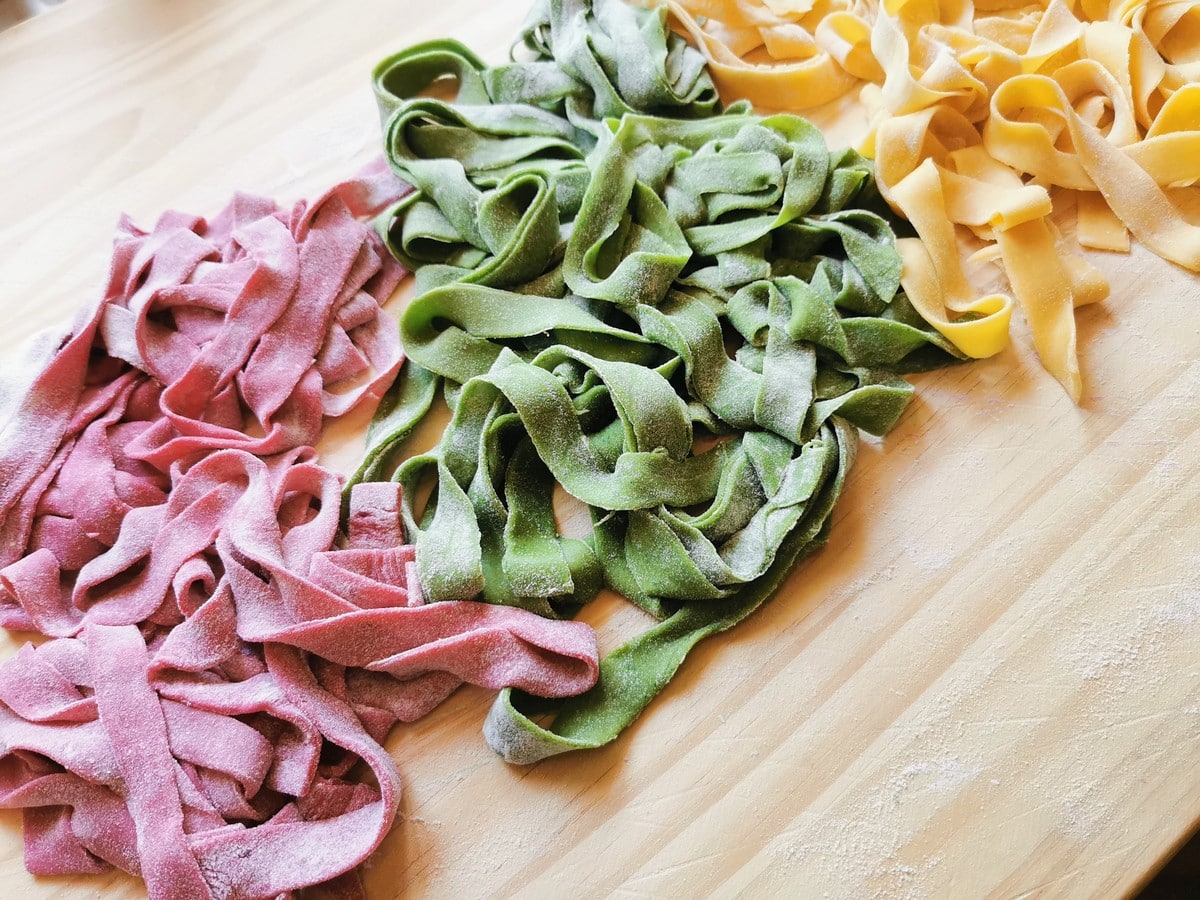
Other variations include gluten-free tagliatelle made from alternative grains such as rice or corn flour and wholegrain.
When tagliatelle isn’t an option or if you're in the mood for something slightly different, other ribbon-shaped pasta like fettuccine or pappardelle are excellent substitutes.
FAQs
The difference between tagliatelle and fettuccine lies in their width. Tagliatelle is typically around 6-8mm wide when raw, expanding an mm once cooked, and it can be made up to 10mm wide.
Fettuccine is narrower, measuring 3mm-5mm raw and expanding to 4mm-6mm once cooked. While both are egg-based pasta, this variation in width influences the texture and sauce pairing, with tagliatelle often served with richer, heartier sauces like Bolognese due to its wider surface area.
Pappardelle is wider than tagliatelle, often over 10mm and can range up to 2-3 cm. This broad width makes pappardelle ideal for pairing with robust, heavy sauces.
Tagliatelle, with its narrower width of around 7mm raw and 8mm cooked, is more versatile, complementing a wider array of sauces.
To prevent tagliatelle from sticking together, start by using a large pot of boiling, salted water to give the pasta plenty of room to move. After adding the tagliatelle, especially if it's in nest form, let it cook for about a minute. Then, gently break apart the nests using tongs.
Continue to stir the pasta occasionally throughout the cooking process. This method, combined with ample cooking water, will help keep the tagliatelle strands separate and prevent sticking.
The weight of dried tagliatelle nests can vary but the normal weight is 50g (1.75oz). Italians use 2 nests per person, for a 100g (3.5oz) serving.
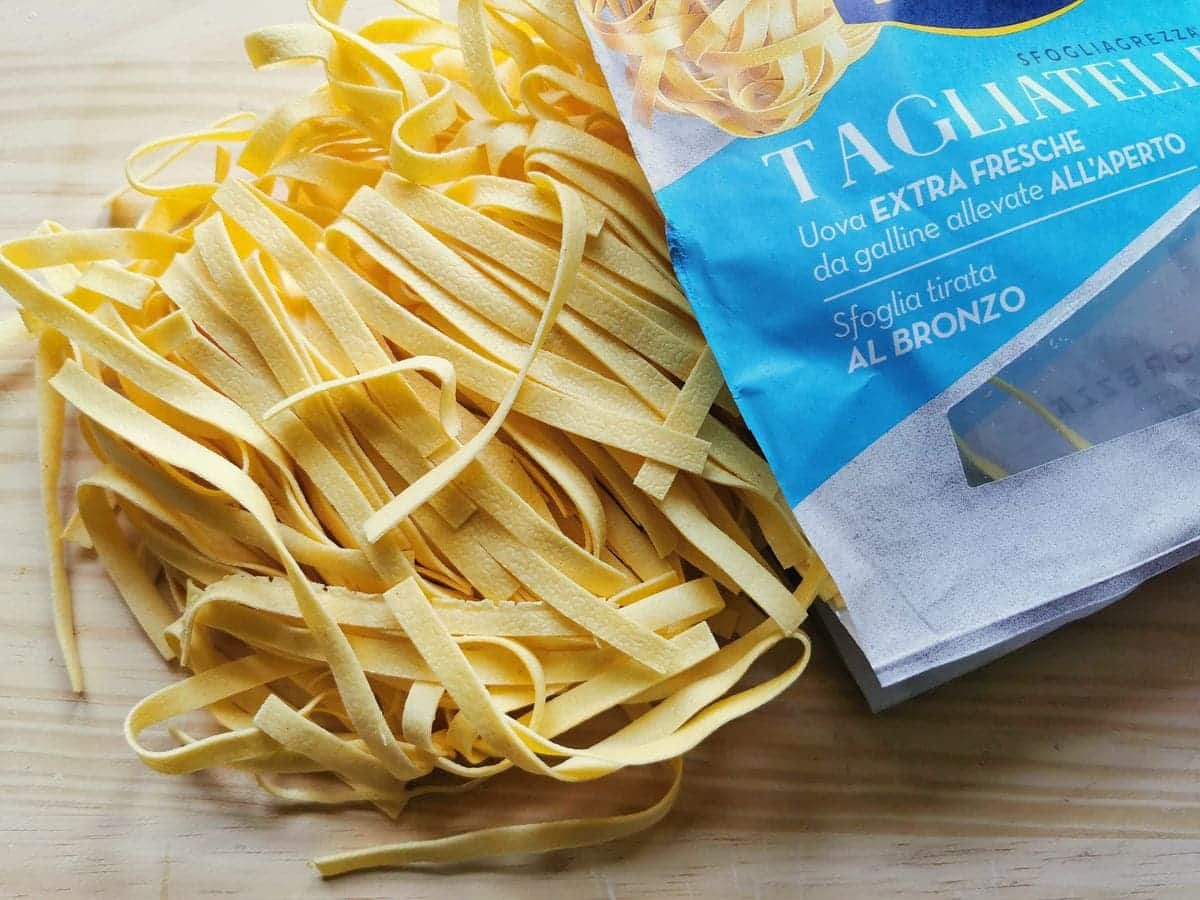
Conclusion
Tagliatelle is a popular Italian pasta with a rich history and versatile nature. It's perfect for a variety of dishes, from classic to modern recipes. If you're interested in trying different tagliatelle recipes, there's a lot to explore and enjoy. Whether you make it at home or try it at a restaurant, tagliatelle offers a delicious taste of Italian cooking.


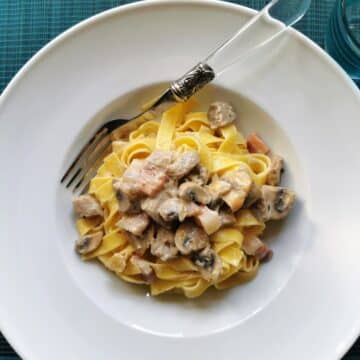
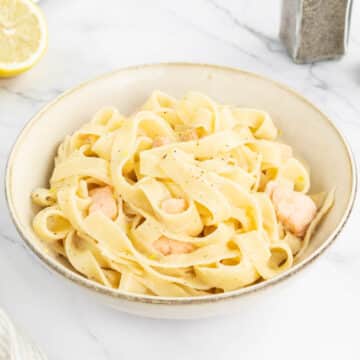
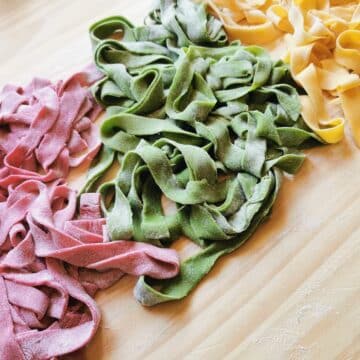
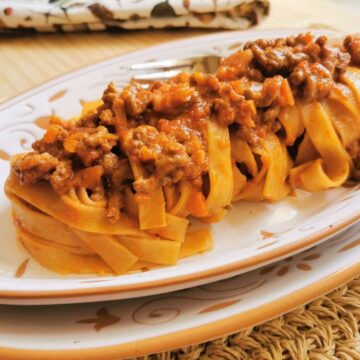
Tell us what you think